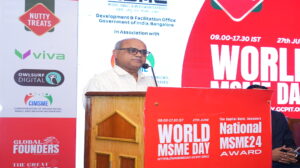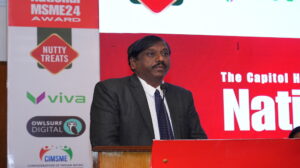10 tech trends impacting infrastructure and operations in 2019

Serverless computing, AI, and the move to the edge will all affect I&O leaders in the new year, according to Gartner.
Infrastructure and operations (I&O) leaders are becoming increasingly involved in the modern day enterprise, and must prepare for a number of impending technological shifts to support digital infrastructure moving into 2019, according to a Gartner report released Tuesday at the Gartner IT Infrastructure, Operations and Cloud Strategies Conference in Las Vegas.
“The focus of I&O leaders is no longer to solely deliver engineering and operations, but instead deliver products and services that support and enable an organization’s business strategy,” Ross Winser, senior director and analyst at Gartner, said in a press release. “The question is already becoming ‘How can we use capabilities like artificial intelligence (AI), network automation or edge computing to support rapidly growing infrastructures and accomplish business needs?'”
During a presentation at the conference, Winser laid out 10 key technologies and trends that I&O leaders must prepare for when supporting digital infrastructure in the new year:
1. Serverless computing
Serverless computing is a growing software architecture pattern that can eliminate the need for infrastructure provisioning and management, according to Winser. I&O leaders need to adopt an application-centric approach to serverless computing, managing APIs and SLAs rather than physical infrastructures.
“The phrase ‘serverless’ is somewhat of a misnomer,” Winser said. “The truth is that servers still exist, but the service provider is responsible for all the underlying resources involved in provisioning and scaling a runtime environment, resulting in appealing agility.”
However, serverless does not replace containers or VMs, so businesses must learn how and where to properly use the technology, Winswer said. “Developing support and management capabilities within I&O teams must be a focus as more than 20 percent of global enterprises will have deployed serverless computing technologies by 2020, which is an increase from less than 5 percent today,” he added.
2. AI impacts
AI has the potential to provide massive value for I&O leaders who need to manage increasingly large infrastructures without increasingly large staffs, Winser said. AI is at the core of digital business, and global business value directly created by AI will reach nearly $3.9 trillion by 2022, Gartner predicts.
3. Network agility (or lack of?)
The network underpins everything it does, from cloud services to the Internet of Things (IoT) to edge computing, Winser said, and will continue to do so in 2019 and beyond.
“Teams have been under pressure to ensure network availability is high and as such the team culture is often to limit change, yet all around the network team the demands for agility have increased,” Winser said. “Part of the answer is building network agility that relies on automation and analytics, and addressing the real skills shift needed to succeed.”
In 2019, I&O leaders must focus on how to help their teams increase the pace of network operations to meet growing demands, including those that will come with 5G and growing numbers of IoT devices. “These are just a few of the pressures leaders should anticipate — so the critical time frame to deal with this challenge is now,” Winser said.
4. Death of the data center
By 2025, 80% of enterprises will move entirely away from on-prem data centers, Gartner predicts.
“I&O leaders must prepare to place workloads based on business needs, not constrained by physical location,” Winser said. “From colocation through to public cloud — plenty of alternatives to on-premises data centers exist. Leaders must identify whether there are truly strategic reasons to persist with on-premises needs, especially when they consider the significant amount of investment involved is often amortized over many years.”
5. Edge computing
With IoT and other technologies driving more information processing to the edge, the things I&O leaders need to deploy and manage will change, Winser said. Infrastructure is increasingly moving out to the edge as well.
“This is another trend that does not replace the cloud, but augments it,” Winser said. “The critical time frame for organizations to adopt this trend is between 2020 and 2023.”
6. Digital diversity management
Digital diversity management involves the discovery and maintenance of assets that are “out there” in any digital enterprise, Winser said.
“There has been huge growth in the range and quantity of “things” that I&O is expected to know about, be supporting and be managing,” Winser said. “Traditional asset management is still important, but we’re moving into the realms of involvement with new assets that might have direct effects on the finances, health and welfare of the organization’s customers.”
7. New roles within I&O
I&O leaders will need to explain their staffing requirements to IT and business leaders in terms of business value, connecting staffing levels to performance and strategic objectives, Winser said.
“For instance, IT is increasingly taking on the role of supporting cloud services in terms of aggregation, customization, integration and governance. A big challenge with cloud services is keeping costs under control, and the business expects I&O to be doing just that,” Winser said. “Rather than focusing solely on engineering and operations, I&O must develop the capabilities needed to broker services; these will require different roles to the I&O of old.”
8. Software as a Service (SaaS) denial
SaaS will continue to have a large impact on how organizations look at infrastructure delivery strategies moving into 2019 and beyond, Winser said. However, many I&O leaders remained focused on Infrastructure as a Service (IaaS) and platform as a service (PaaS) solutions instead.
“SaaS itself is becoming a level of complexity that IT shops aren’t yet coping with as they should,” Winser said. “The shift to SaaS must be accompanied with I&O support, all the way from ensuring visibility is maintained of what is in use, through to supporting compliance requirements and enterprise integration needs. Leaders must start this now as the pressure will be on through 2021 and beyond.”
9. Talent management becomes critical
The move to a digital infrastructure means IT staff will need to work horizontally across stacks to identify and fix technology work stoppages in their business, Winser said. It will be critical for businesses to expand I&O skillsets, practices, and procedures to take into account these hybrid operations in 2019.
“In short, talent is the critical ingredient for a modern, high-performing technology organization, and great talent is in high demand,” Winser said. “People that show versatility and adaptability are quickly becoming must-haves, particularly in hybrid environments.”
10. Global infrastructure enablement
Few infrastructures are truly global at this point, but organizations must still prepare for the idea of “infrastructure everywhere,” Winser said. In doing this, I&O leaders must work within the constraints of tight budgets, he added. One way to do this is to look to a network of partners.
“I&O leaders must look hard at their existing partners and raise the bar of expectation. Can they clearly identify the value the partner will bring to them in the context of global infrastructure? Are they unlocking all the value from recent investments their partners have been making?” Winser said. “There will be no time for ‘B-team’ partners in 2019 and beyond.”






